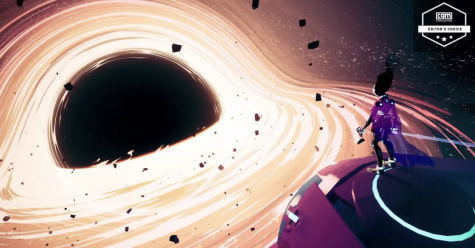Solar Ash Review: Kinetic, Kinesthetic, and Magnetic

Solar Ash is an undeniably smooth game. From its effortless platforming to its breathtaking visuals that match even the best of Studio Heart Machine’s previous project, Hyper Light Drifter, Solar Ash is expertly crafted in both its gameplay and art direction.
However, beyond the game’s kinesthetic and aesthetic appeal, there isn’t much else to Solar Ash, though that doesn’t mean the game is bad. In fact, Solar Ash is quite good.
After a brief opening cutscene where our escape pod crashlands on a mysterious planetary mass, the player assumes control of Rei. Rei is part of a special unit of voidrunners who are on a mission to activate a device called the Starseed, which has the power to save her people from a giant world-eating black hole known as the Ultravoid.
As a voidrunner, Rei can effortlessly skate along various terrains, leaving behind dazzling neon-blue plasma streaks in her wake. In addition, she can boost added distance and momentum. These two core components coalesce into an incredibly smooth and speedy movement system, which always feels good to use when traversing the game’s many open areas. Even when other gameplay systems fall short, the movement of Solar Ash keeps the game fun and is undoubtedly one of its best aspects.
Dashing and skating also flow effortlessly into combat, given Rei’s ability to attack while moving. This, combined with enemies that punish the player for standing still (the skull enemies who fire tracking laser beams come to mind) allow Solar Ash’s combat and movement to exist in symbiosis, each mutually supporting the other. The combat isn’t deep by any means, only providing the player with the ability to perform a basic slash.
But the highest honors undoubtedly go to Solar Ash’s boss fights. These battles are kinetic and make full use of the movement system in order to push it to its limit. The encounters themselves involve rapidly scaling the body of a colossal manifestation of the Ultravoid, all under strict time pressure, with one mistake equaling death. It’s challenging, but the feeling of dashing between weak points before dealing a critical blow while the heavy all-consuming synth of the game’s composer, Disasterpeace, wails is absolutely exhilarating.
However, this exhilaration, this simple joy of movement, is where my enjoyment of Solar Ash ends. The mechanics may be fun, but that’s all they are, lacking in any meaningful depth and never once properly expanded on. I found myself inevitably bored during parts of my playthrough because the mode of gameplay stays largely the same, even across different areas.
Most levels try to rectify this issue by introducing their own gimmick to spice things up, but more often than not, these gimmicks just put a new aesthetic paint over the standard gameplay (I’m looking at you colored spores) rather than meaningfully exploring depth, or adding on top of the design already in place.
Despite this major shortcoming, I really enjoyed Solar Ash, and am excited to see where Studio Heart Machine goes with their next game. As of now, Solar Ash is exclusive to PS4, the Epic Games Store, and the ever-elusive PS5 at a pretty nasty $40 bucks, which is questionable given the game’s ten-hour average playtime, so if you are interested, I highly recommend waiting for a sale of at least half-off.